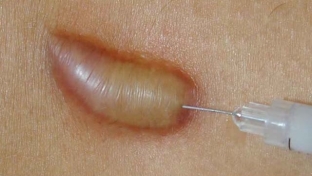Prevention of the formation and treatment of hypertrophic and keloid scars is very important for patients, since these skin defects can cause a lot of discomfort, cause functional disorders – when located on the face and greatly impair the quality of life. In clinical practice, various methods of influencing scar tissue – these are hardware methods, and peelings, and drug therapy, and surgical removal of scars. Which methods and in what cases are most preferable, we choose from estet-portal.com.
Things to remember when choosing a treatment for scars
It is not easy to develop an optimal scar treatment regimen, since in clinical practice it is not always possible to clearly distinguish whether a hypertrophic or keloid scar is formed. Today, medicine has a rather extensive list of ways to influence pathological scars:
- hormone therapy,
- enzyme therapy,
- peelings and dermabrasion,
- bucca therapy,
- cryolysis,
- laser exposure.
In addition, if the decision is made to surgically remove the scar, therapeutic tissue preparation is performed to avoid the risk of re-scarring.
Cicatricial deformities that occur after operations on the face take the form of annular or horseshoe-shaped strands, which provoke eversion of the lips and corners of the mouth, violation of the relief of the nose, cheeks, chin, muscle contractures.
When choosing a treatment strategy or a technique for removing scars, it is necessary to take into account their localization, presence & nbsp; excessive tissue tension, assess the risk of recurrence after reoperation, be aware of the possible impact of endocrine disorders on the scarring process.
Tactics of treatment of unformed and immature scars
Scars that are just forming after a recent operation and continue to grow are referred to as immature, unformed. Their correction involves a rational combination of various methods.
Immediately after the – to prevent scar keloidosis or scar hypertrophy:
- magnetotherapy,
- electrophoresis with lidase, longidase or collagenase,
- external ointment contratubex,
- compression bandage.
If a small or medium hypertrophic scar forms:
- intralesional hormonal injections,
- bucca therapy,
- phonophoresis with contratubex,
- compression therapy.
Laser dermabrasion is recommended after six months, if the condition of the scar tissue improves.
If a small keloid scar forms:
- cryolysis,
- intralesional hormonal injections,
- physiotherapy and compression bandages.
In the case when the forming scar causes anatomical and functional disorders, surgical removal of the scars with plasty with local tissues is indicated.

Methods of correction for formed cicatricial lesions of the face
In the presence of hypertrophic scars of medium size, which have already formed and cause physiological disorders on the face, surgical treatment with plasty with local tissues is indicated. Auxiliary therapy in this case are physiotherapy, external use of ointments such as contratubex and compression bandages. A medium-sized keloid scar is subject to a similar treatment, but it is necessary to add intralesional injection therapy with hormonal drugs.
If it is necessary to eliminate a large keloid scar or a scar mass, plastic surgery is indispensable. Scar removal is carried out with the replacement of excised tissues with free full-thickness or non-free stalked skin flaps.
As adjunctive therapy, intralesional hormonal injections, physiotherapy with contratubex and compression bandages are included in the treatment regimen. To prevent relapses, bukki therapy is prescribed.







Add a comment